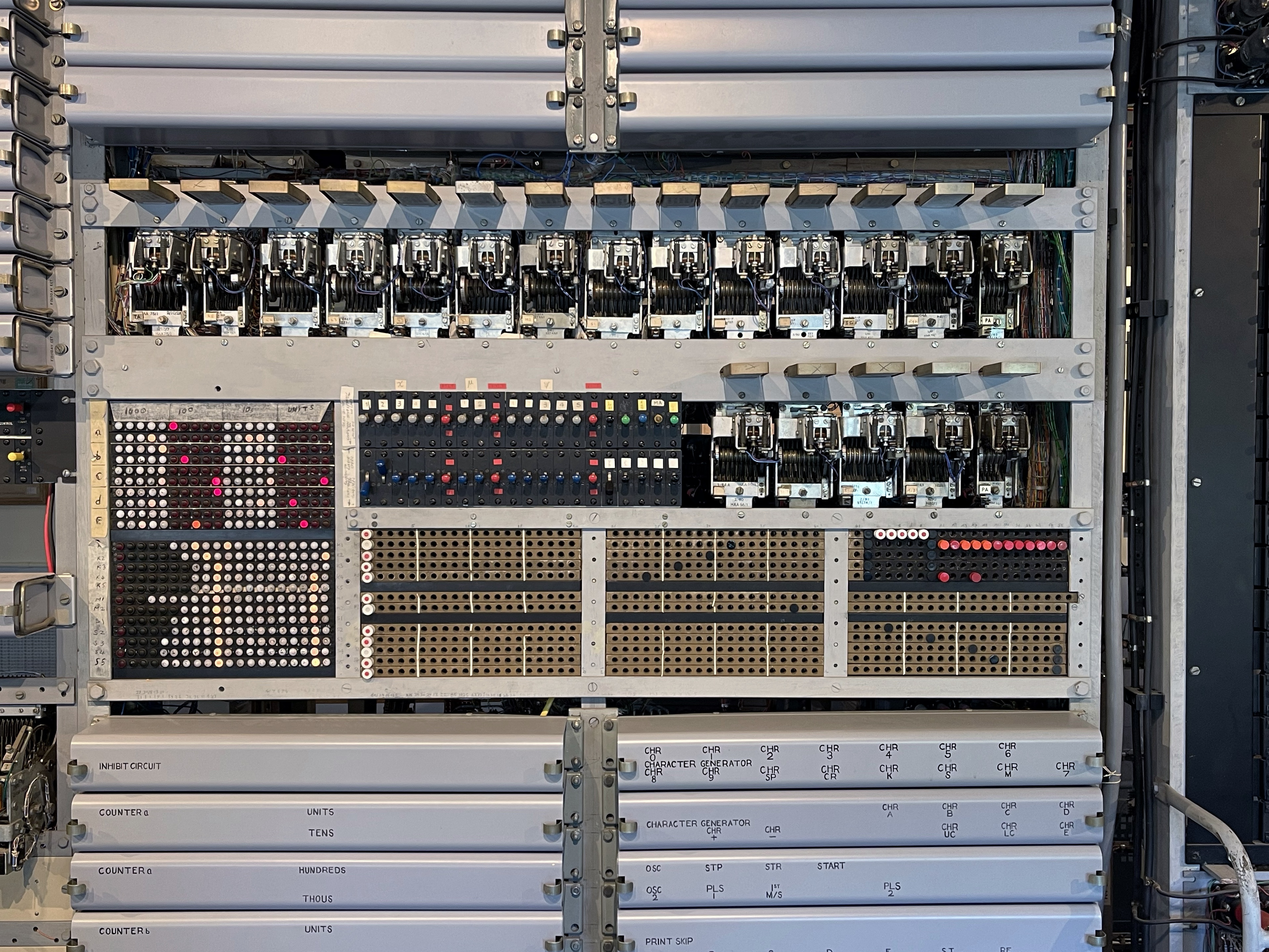
Last time we ran across a couple of retro computing collections in London. This time, we’re going to visit The National Museum of Computing located on the historical Bletchley Park campus.
The National Museum of Computing is maintained by volunteers, many of whom have deep expertise with the machines they look after. As our group had arrived early, we ran into a volunteer who was kind enough to stay with us in the hot morning sun and give us a brief history of the museum. It turned out he’d moved house just so he could be closer to the campus and would be available to volunteer on weekends. That’s dedication!
Let’s take a look inside.
The Computers which Helped Win the War
What was surprising for me is the most famous of the machines on the Bletchley Park campus weren’t being kept over in the main attraction, but rather here in the lesser visited National Museum of Computing. Perhaps because they require so much specialised care and maintenance, the best place to have these is near the dedicated team of volunteers with the technical knowledge to look after them.
There’s so much been written about this period of history, of the work of Alan Turing and his team whom worked in secrecy, many of which never received recognition for their efforts in their lifetimes due to the Official Secrets Act.
Alan Turing himself made contributions to computer science which will be close to the heart of any graduate, such as the Turing Machine or the Church-Turing thesis. These form the theoretical underpinnings of current computing. In-spite of such incredible contributions to the war, his country and his field of knowledge, Turing received appalling treatment at the hands of the state with tragic consequences.
Visiting Bletchley Park and the National Museum of Computing is one way to pay pilgrimage to this era where one might argue the discipline of modern computer science was born.
 The Lorenz SZ42 was a cipher machine used by Germany during World War 2, one of only four which are known to have survived.
The Lorenz SZ42 was a cipher machine used by Germany during World War 2, one of only four which are known to have survived.
 This board was used by a Lorenz operator to identify the message wheel starting position.
This board was used by a Lorenz operator to identify the message wheel starting position.
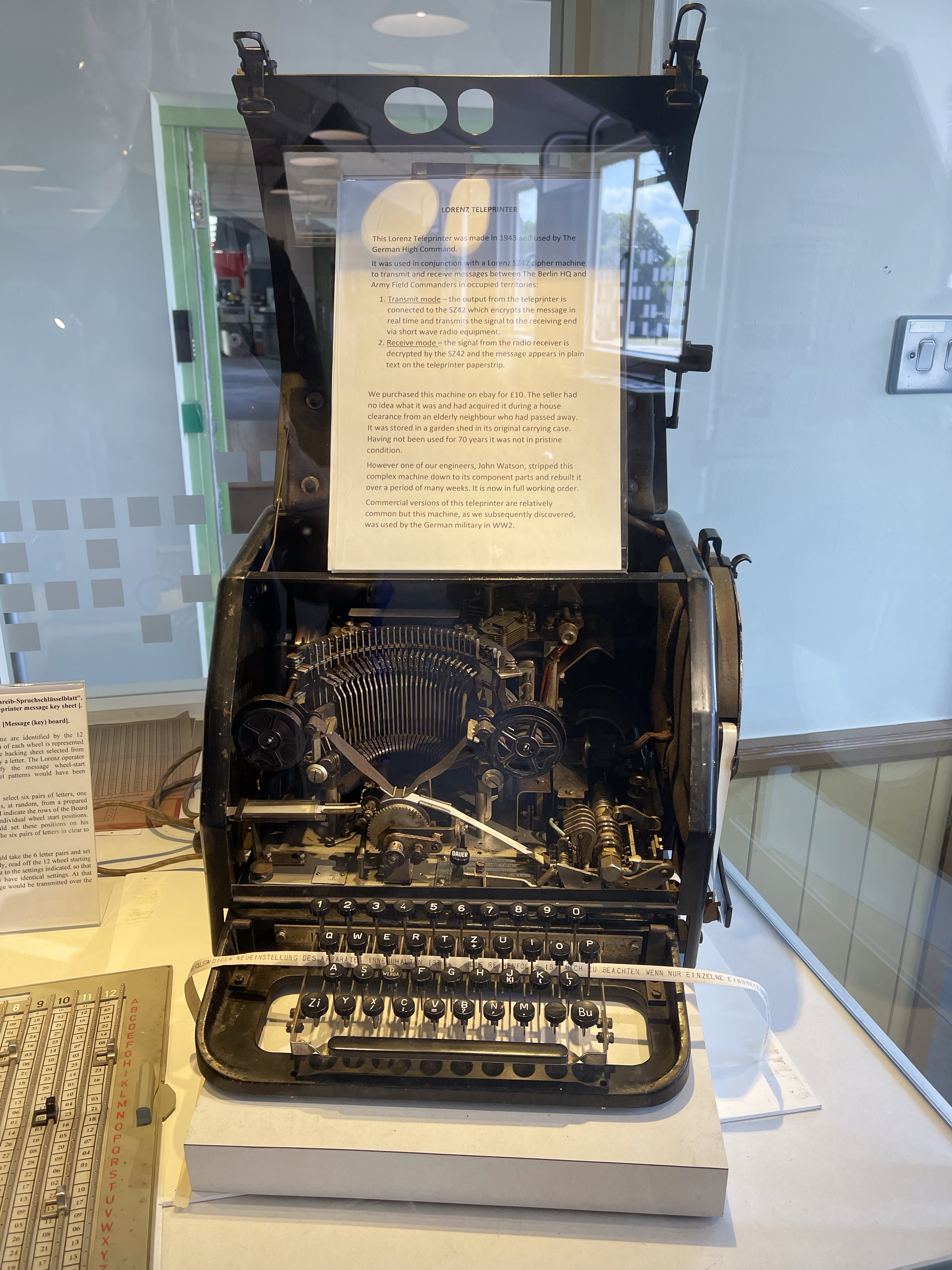 A Lorenz Teleprinter.
A Lorenz Teleprinter.
 The Colossus, considered the first electronic computer and created to decipher the Lorenz.
The Colossus, considered the first electronic computer and created to decipher the Lorenz.
 A closer look at the Colossus.
A closer look at the Colossus.
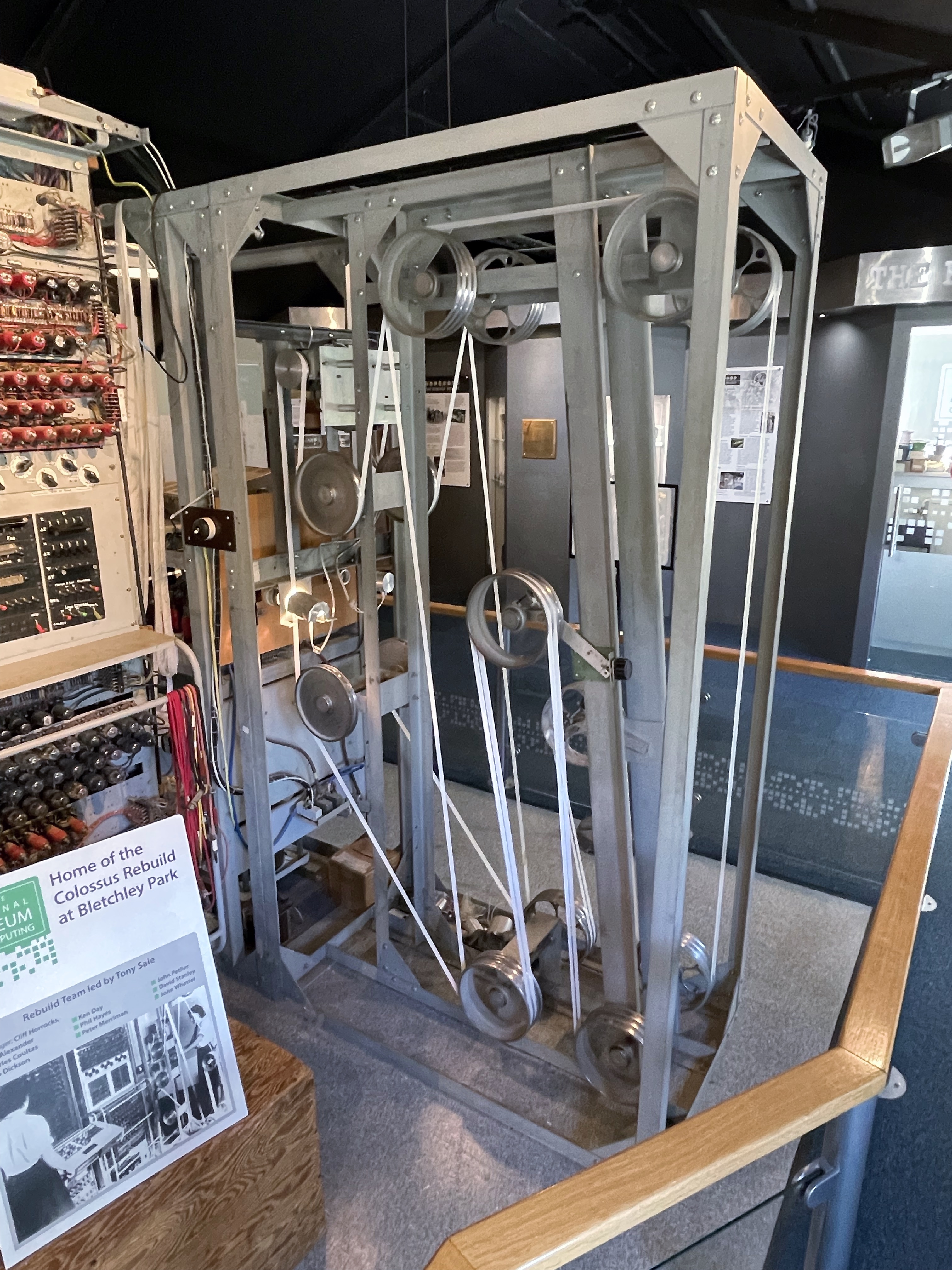 Reels of punched tape containing the data to be cracked.
Reels of punched tape containing the data to be cracked.
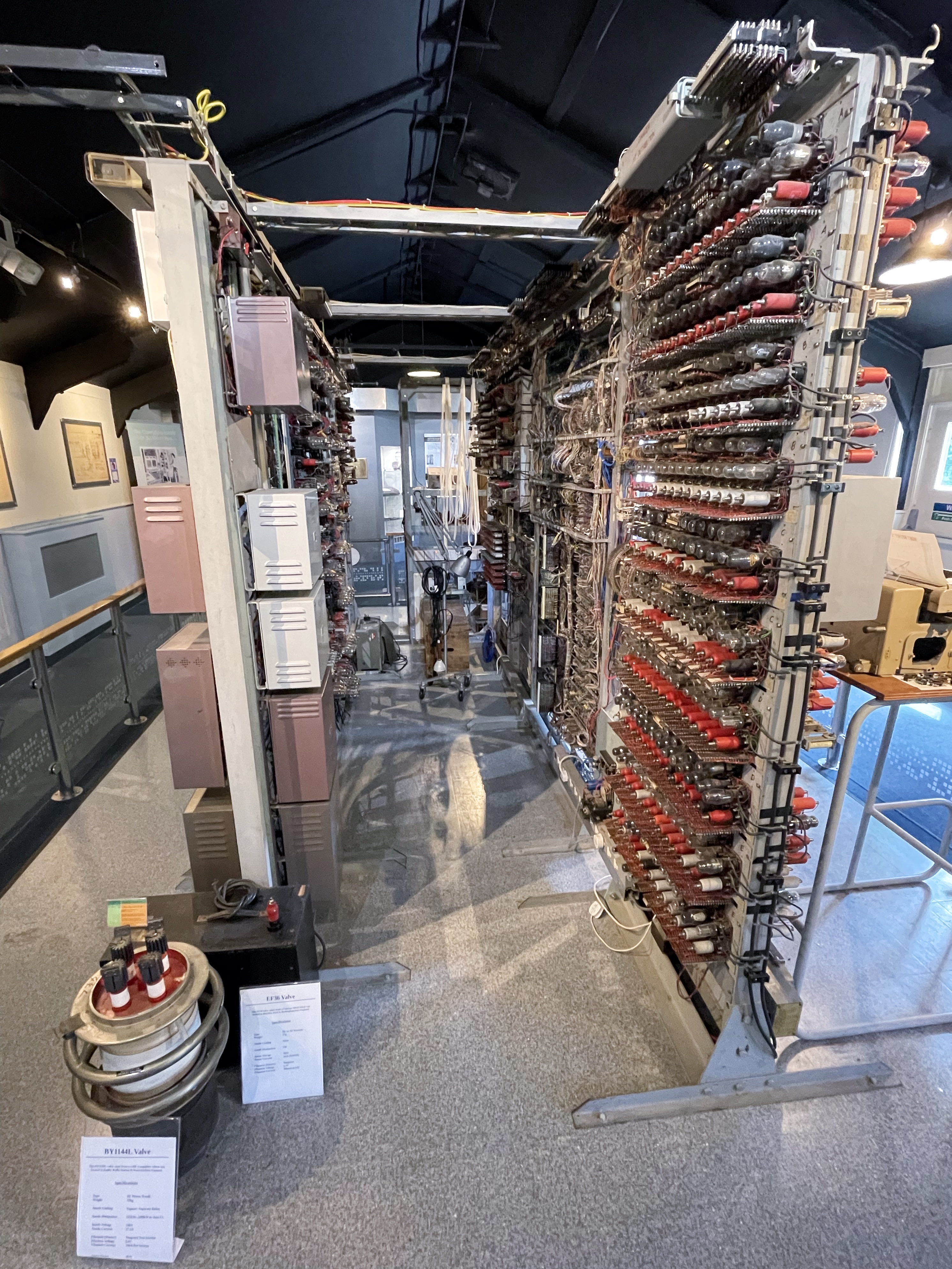 A rear view look at the Colossus.
A rear view look at the Colossus.
If you have the opportunity to visit, the volunteers will give talks and demos of these fascinating devices, and you can ask them any questions you might have. If you’ve only experienced these machines in books and on the internet, then seeing them in action and being able to speak to the people who rebuild and look after them is a special experience.
I’ve not done any of this justice in my short writeup, and if you’re not in a position to visit in person then their excellent website has lots of photos and in-depth articles.
The Microcomputers of Bletchley Park
Whereas the Colossus and machines of its era are strictly hands-off, if we jump forward into the 80’s the museum is full of devices which you can actually sit down and use.
This part of the museum is great for kids, and it’s a good opportunity for children to get some hands-on time with these amazing machines.
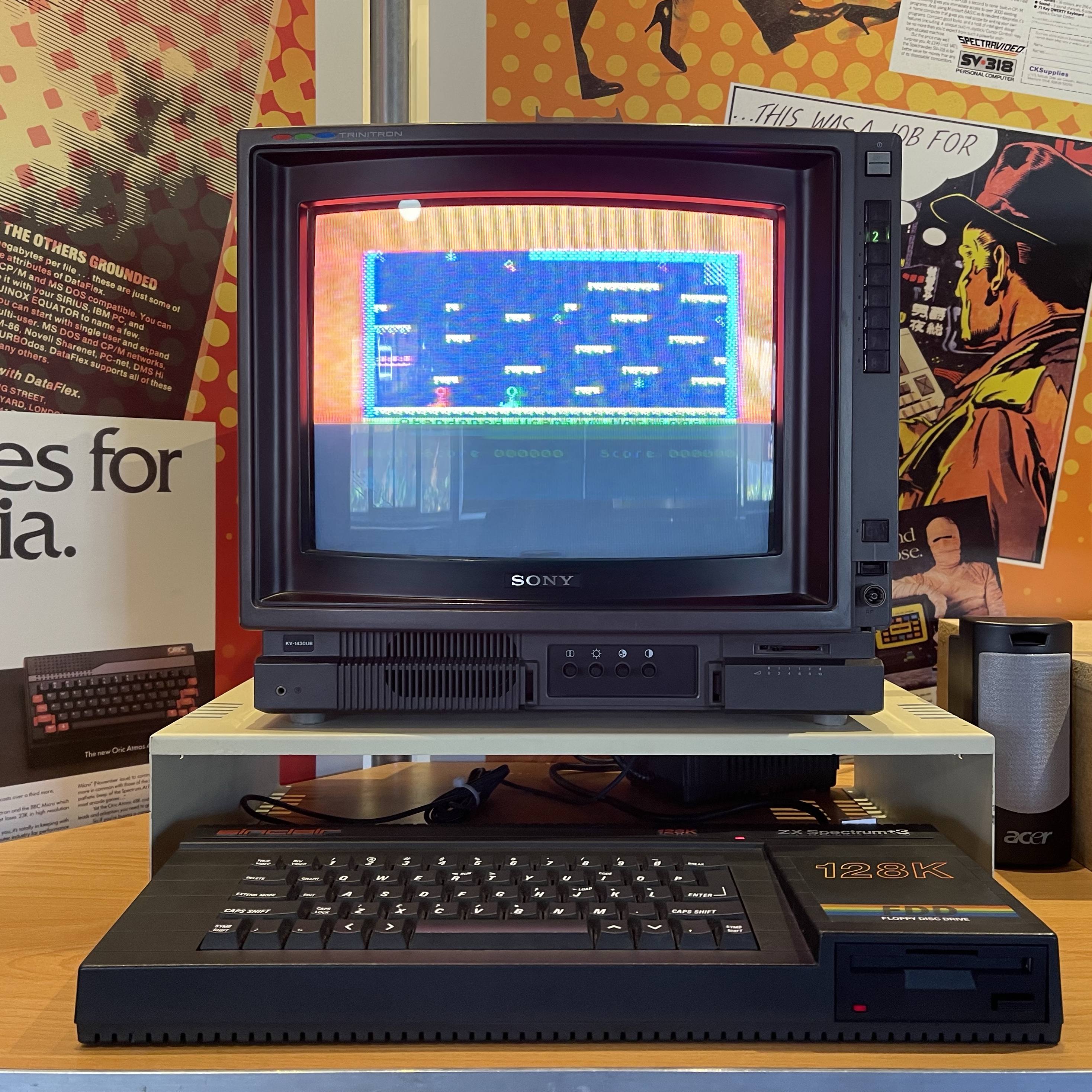 The Spectrum +3. Released during Amstrad’s tenure as owners of the Sinclair brand, it was the first Spectrum to come with a disk drive, but also supported tape loading and software from the older 48k model.
The Spectrum +3. Released during Amstrad’s tenure as owners of the Sinclair brand, it was the first Spectrum to come with a disk drive, but also supported tape loading and software from the older 48k model.
 The Amstrad influence is apparent here. The 3-inch floppy disks were common in the Amstrad ecosystem such as the CPC and PCW ranges of Amstrad machines. Apparently the +3 could also run the CP/M operating system which was another staple of the Amstrad world. It was a very versatile machine!
The Amstrad influence is apparent here. The 3-inch floppy disks were common in the Amstrad ecosystem such as the CPC and PCW ranges of Amstrad machines. Apparently the +3 could also run the CP/M operating system which was another staple of the Amstrad world. It was a very versatile machine!
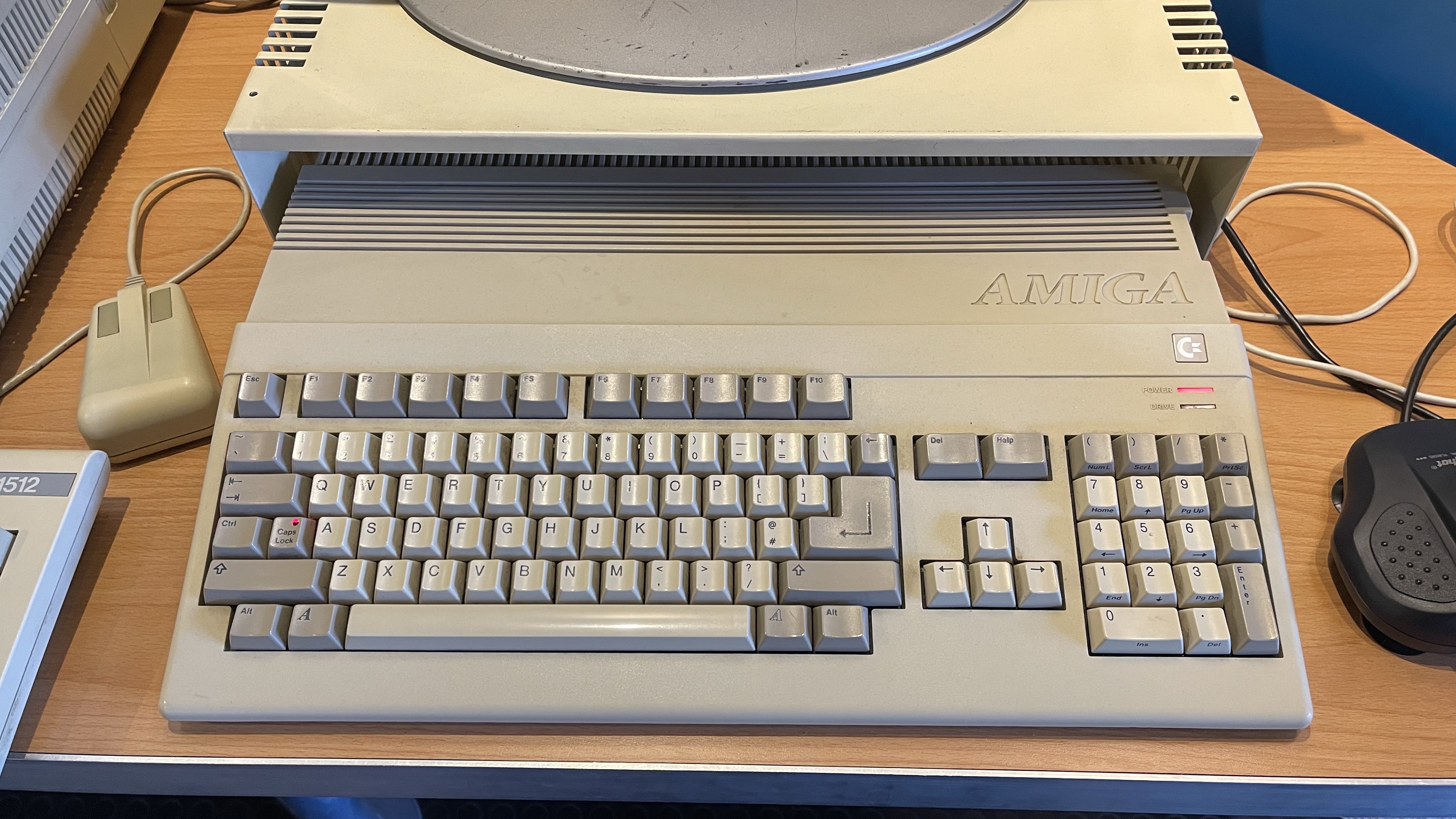 The Amiga A500 with its unique mouse and keyboard.
The Amiga A500 with its unique mouse and keyboard.
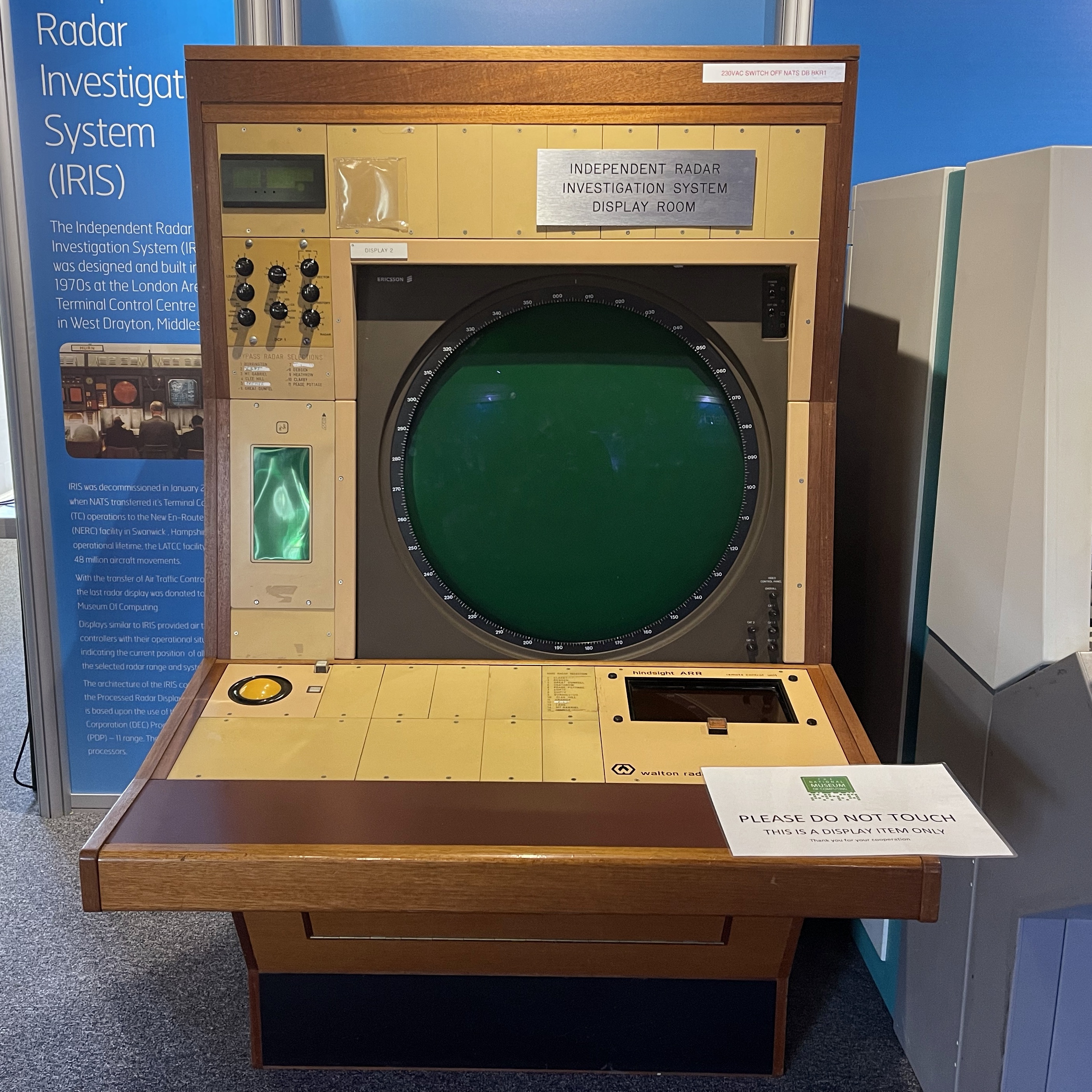 A radar station!
A radar station!
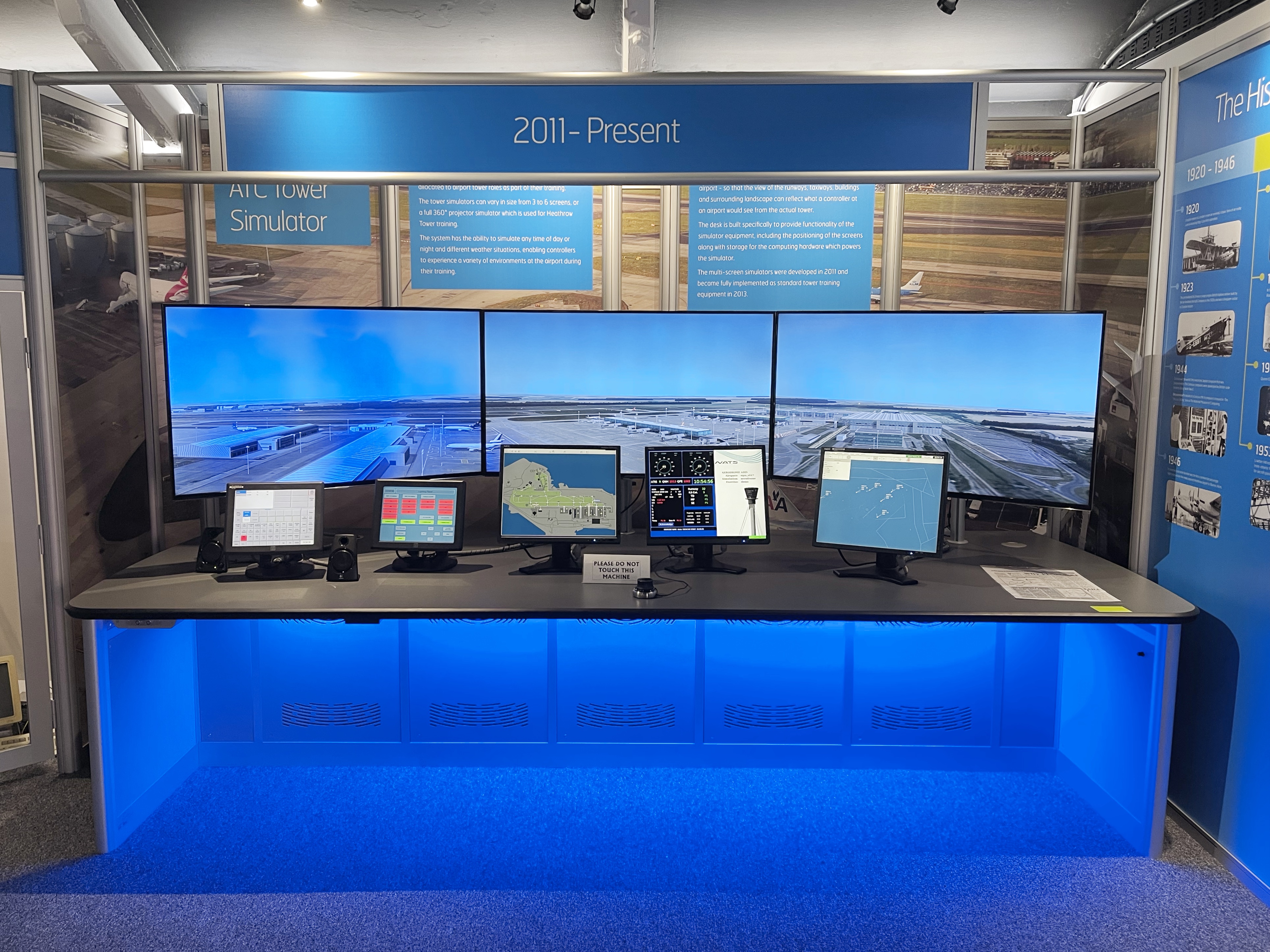 An air traffic control tower simulator.
An air traffic control tower simulator.
As an aside, it’s not just simulators which work this way. Remote air traffic control towers exist as well with cameras at the airport beaming visuals to virtual ATC towers. For example, the London City ATC tower is actually in Hampshire, but the controllers have the same view over the tarmac they would if they were physically in London.
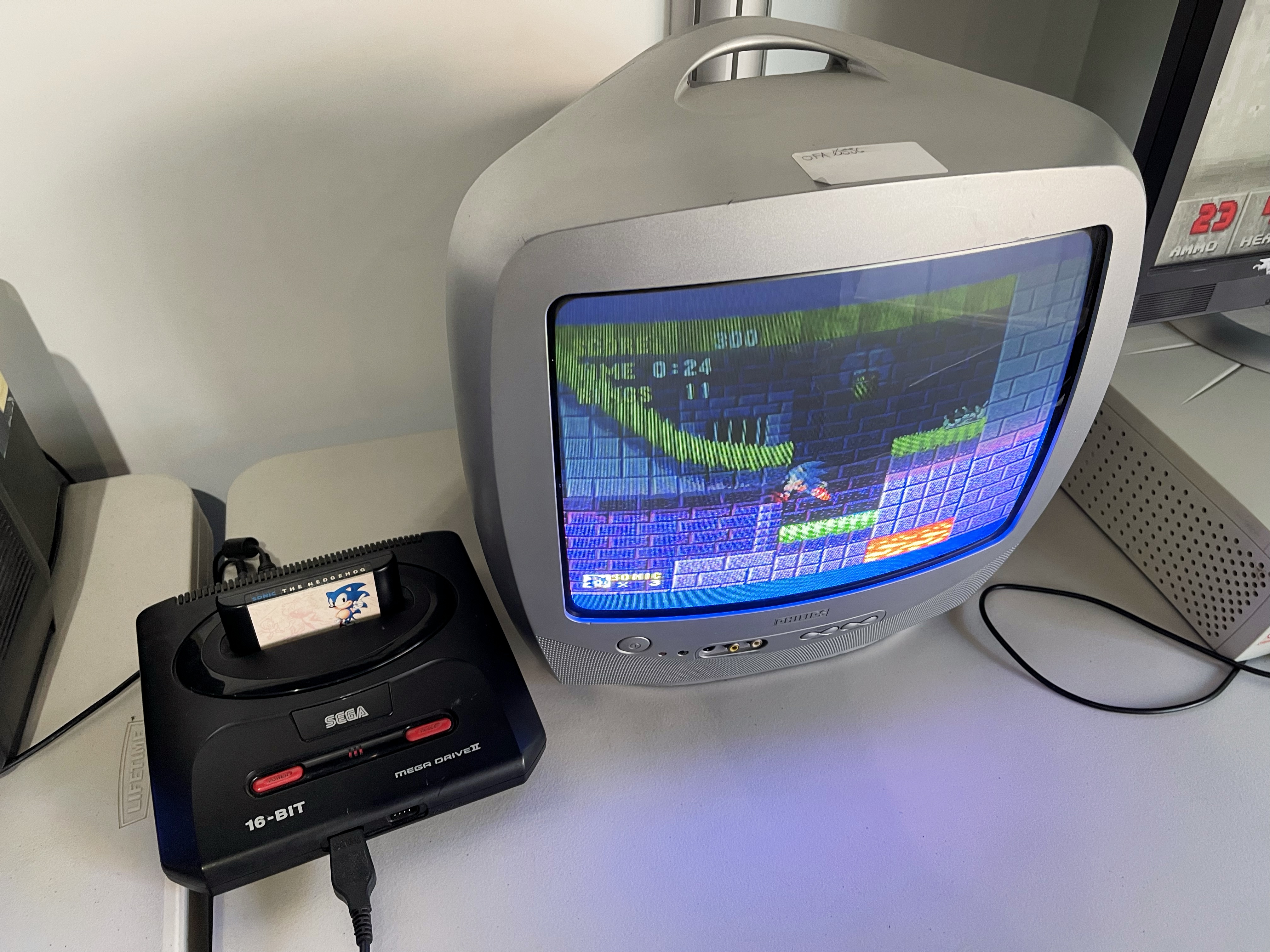 The Sega Megadrive II (known as the Genesis II in North America). Identical in features to the original Megadrive, just smaller and cheaper to produce. In play is Sonic the Hedgehog.
The Sega Megadrive II (known as the Genesis II in North America). Identical in features to the original Megadrive, just smaller and cheaper to produce. In play is Sonic the Hedgehog.
 The classic woodgrain Atari 2600 with Space Invaders running in demo mode. A lot of these games would change the screen colour periodically when no one was playing to prevent burn-in. In a way, these games may have been the world’s first screensavers!
The classic woodgrain Atari 2600 with Space Invaders running in demo mode. A lot of these games would change the screen colour periodically when no one was playing to prevent burn-in. In a way, these games may have been the world’s first screensavers!
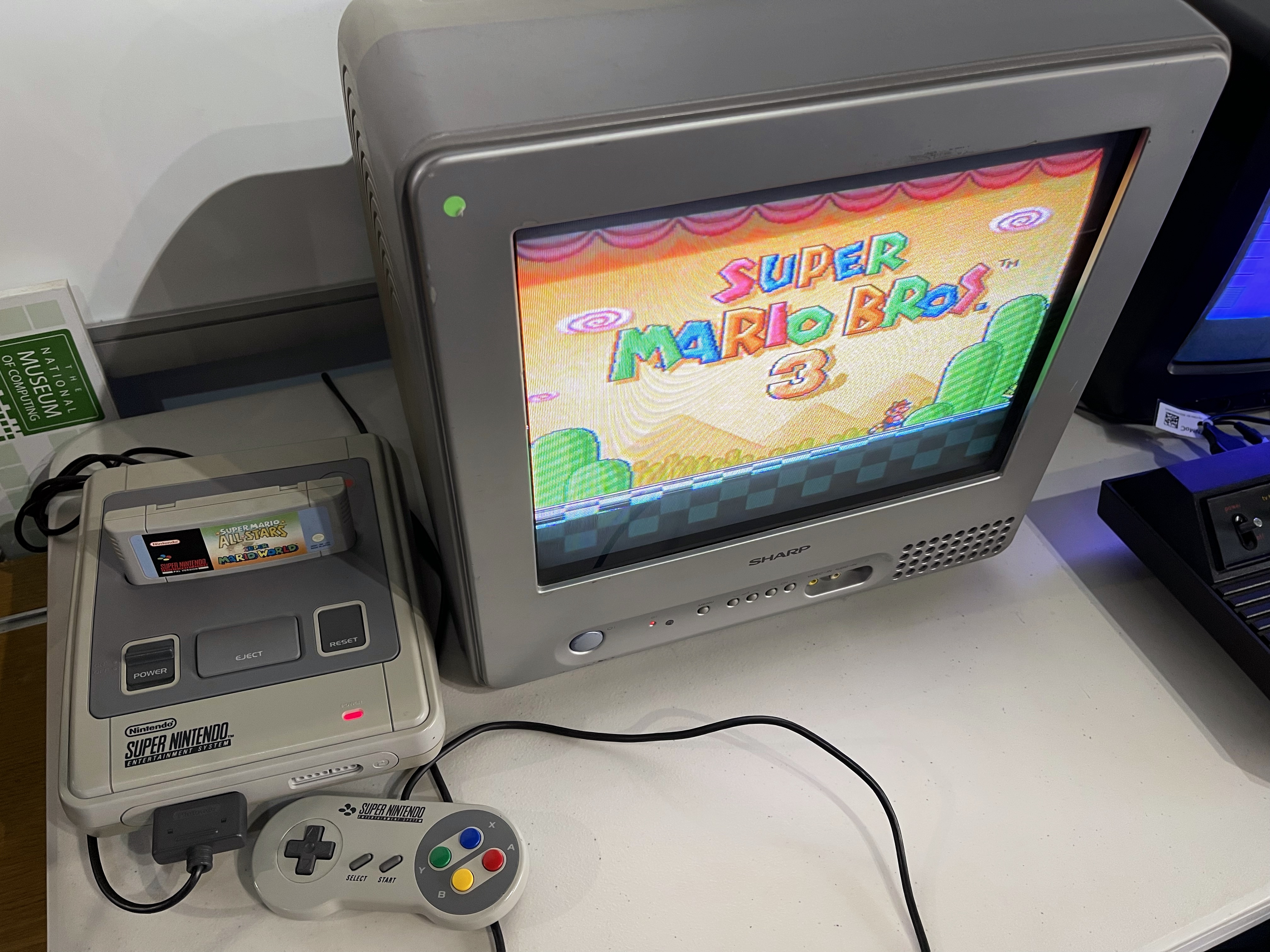 A Super Nintendo Entertainment System (or “SNES”) playing Super Mario World. The SNES was the main competitor to the Sega Megadrive.
A Super Nintendo Entertainment System (or “SNES”) playing Super Mario World. The SNES was the main competitor to the Sega Megadrive.
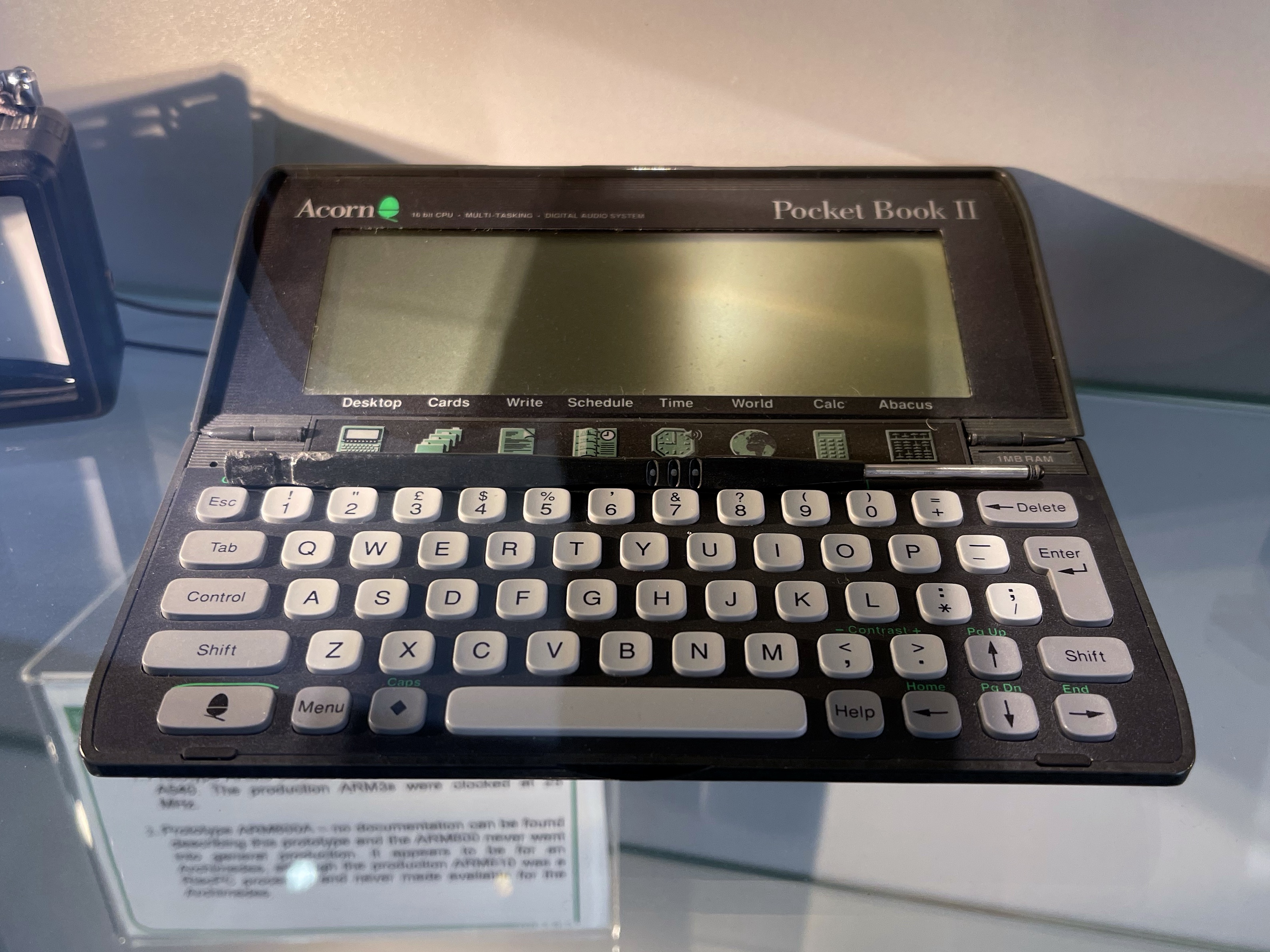 A uniquely British phenomenon, Psion manufactured a range of incredible palm-tops. The version seen here however has the Acorn branding under the name Pocket Book II, but it’s basically a Psion 3a with a few differences.
A uniquely British phenomenon, Psion manufactured a range of incredible palm-tops. The version seen here however has the Acorn branding under the name Pocket Book II, but it’s basically a Psion 3a with a few differences.
As a kid I remember borrowing one from my school for a few weeks, although I can’t remember if it was this version or the prior one. I do remember it was missing the OPL programming language, which was one of the main draws for me and a bit of an odd omission, especially as the Acorn branding was aimed at schools and education.
It also came with spreadsheet software called “Abacus”, and I’m curious if it’s different to the spreadsheet software included on the 3a which is just called “Sheets”.
The Pocket Book II also has a thesaurus and plotter, which the 3a lacks.
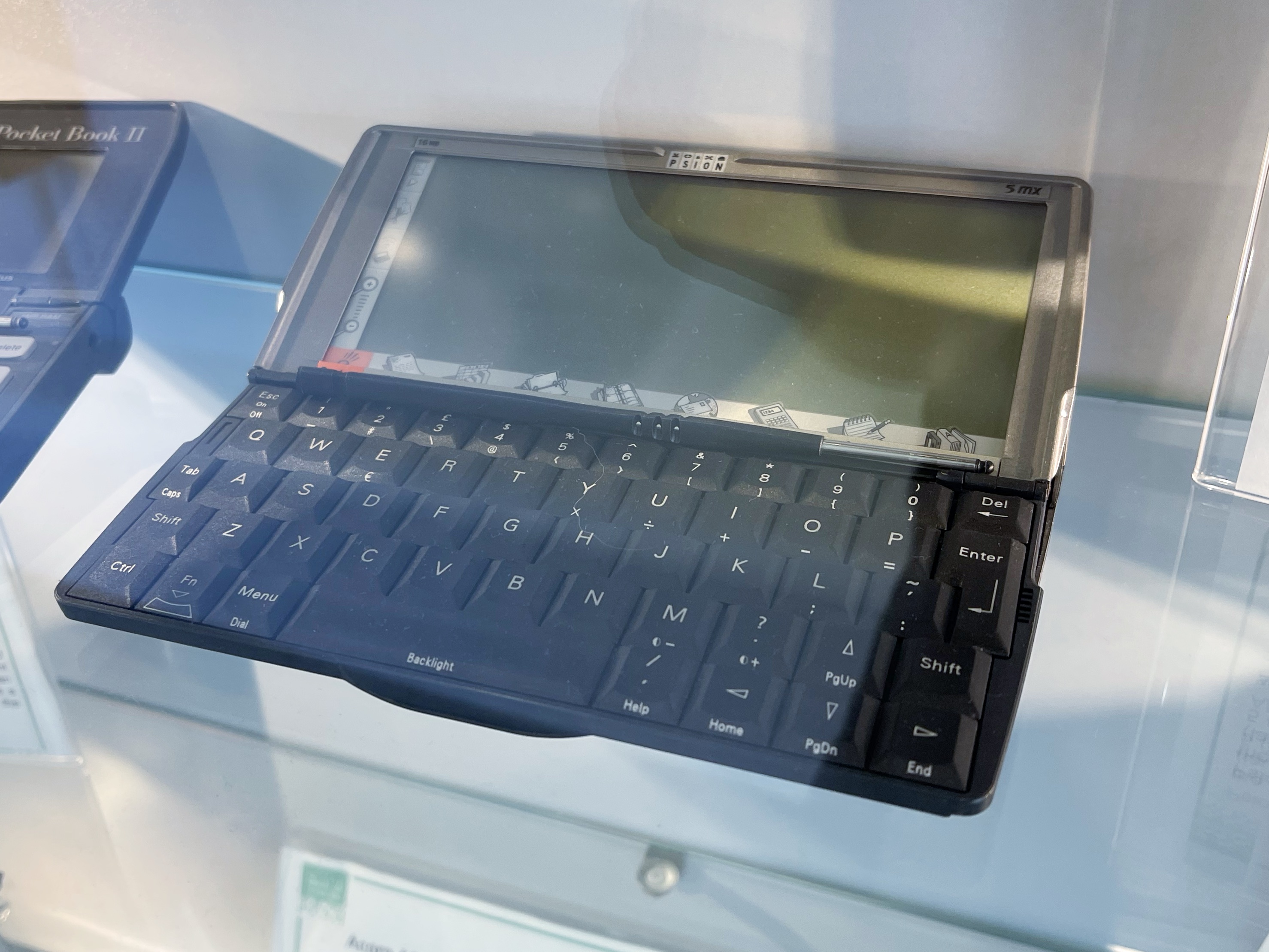 The Psion Series 5, the successor to the 3 series of palmtops. This was an ambitious device with a rewritten operating system and touch screen. The keyboard would extend out when you opened it from its clamshell, but sadly this lead to common defects whereby the ribbon cable connecting the screen to the keyboard would break.
The Psion Series 5, the successor to the 3 series of palmtops. This was an ambitious device with a rewritten operating system and touch screen. The keyboard would extend out when you opened it from its clamshell, but sadly this lead to common defects whereby the ribbon cable connecting the screen to the keyboard would break.
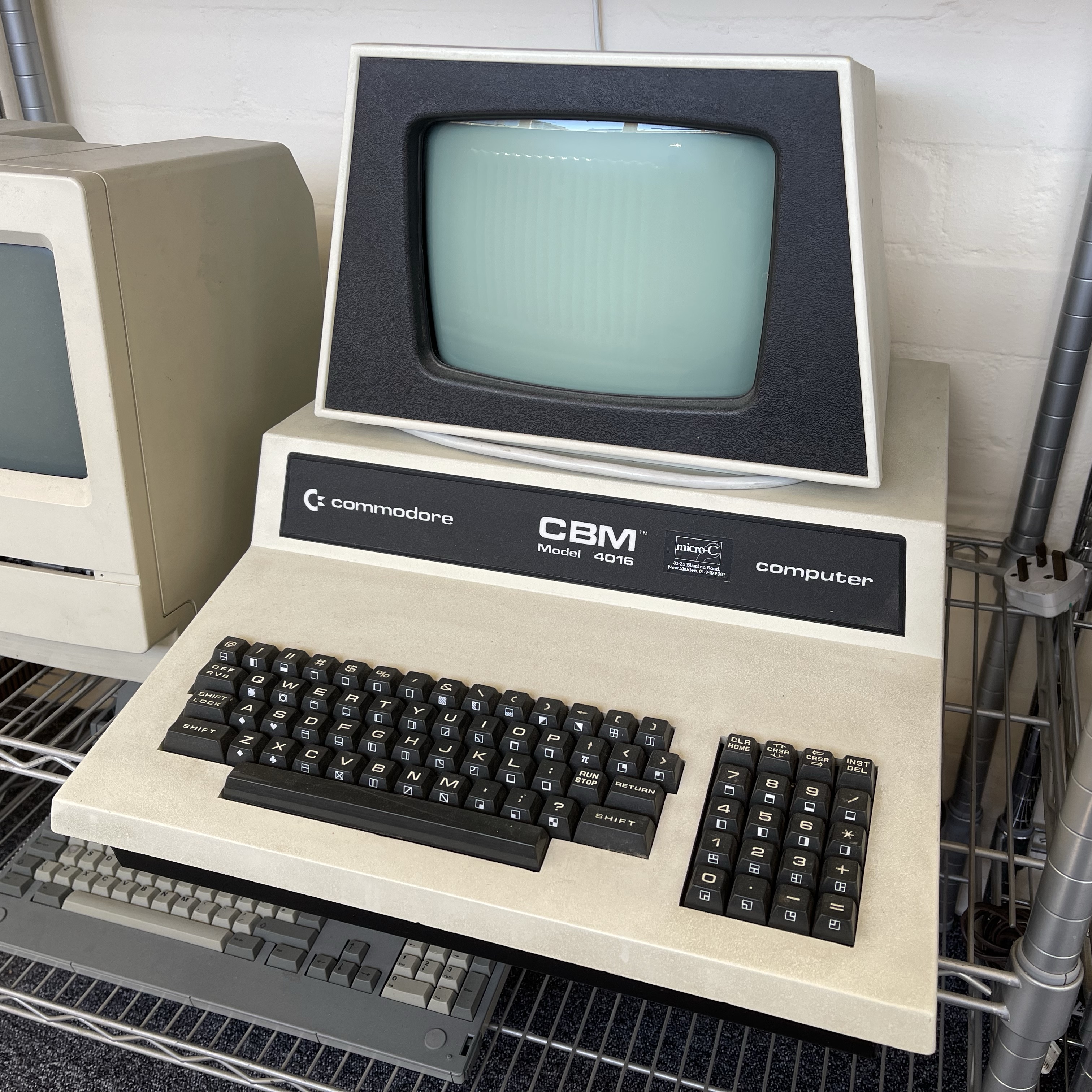 A Commodore PET, rebranded as the CBM in Europe for copyright reasons. There were several variants, this one being the CBM 4016.
A Commodore PET, rebranded as the CBM in Europe for copyright reasons. There were several variants, this one being the CBM 4016.
 A Macintosh Classic, the first Macintosh which was considered to be affordable.
A Macintosh Classic, the first Macintosh which was considered to be affordable.
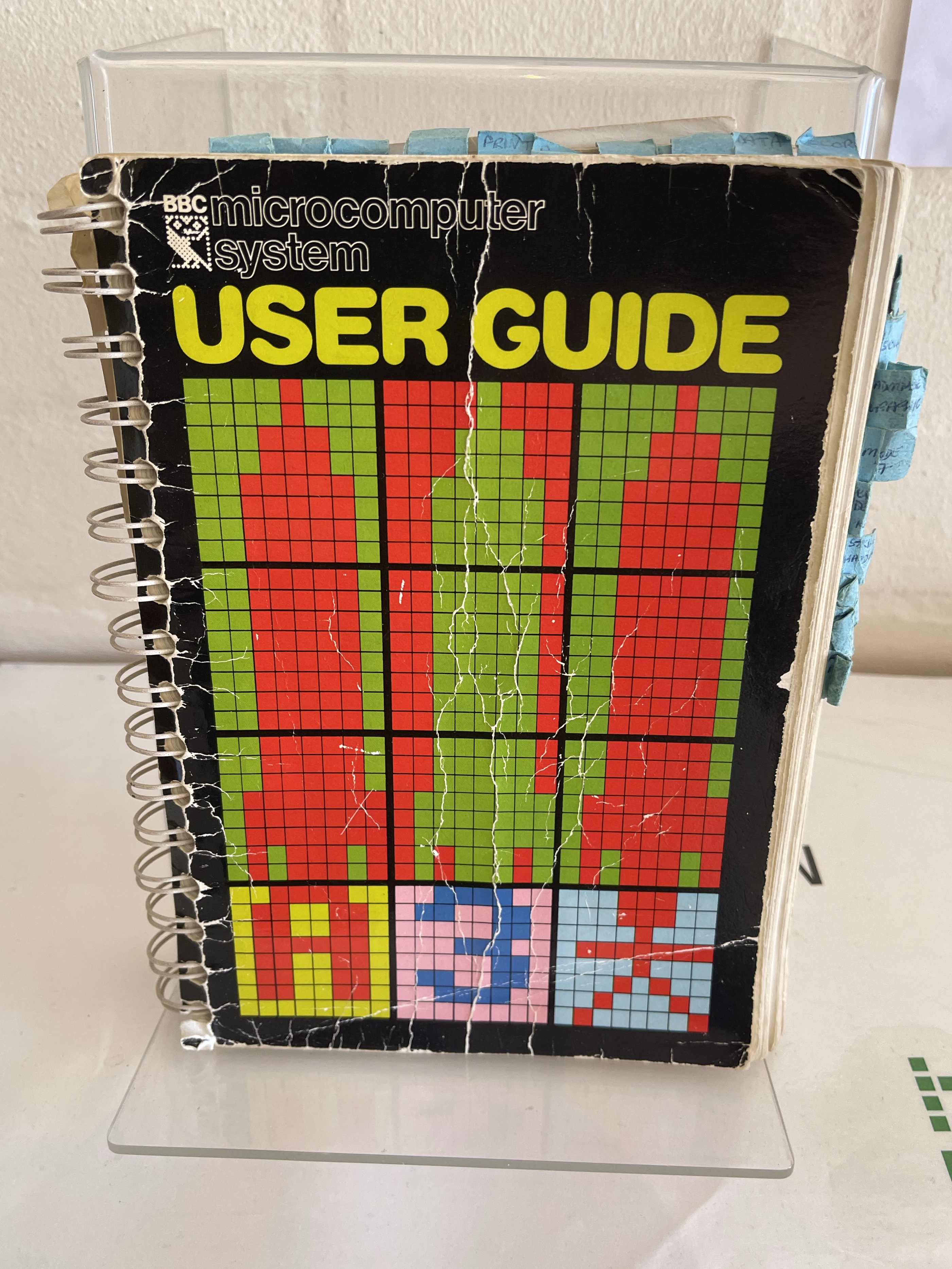 One of many guides for the BBC Micro series of computers. The front cover is showing how you can redefine characters to make graphics.
One of many guides for the BBC Micro series of computers. The front cover is showing how you can redefine characters to make graphics.
Typically you’d get an exercise book with squares and fill in the boxes of 8x8 grids. From that you could add up the binary values of each row in the grid to construct a command which would reprogram one of the characters.
It was a quick and dirty way to make a game quickly without needing to learn about things like sprites.
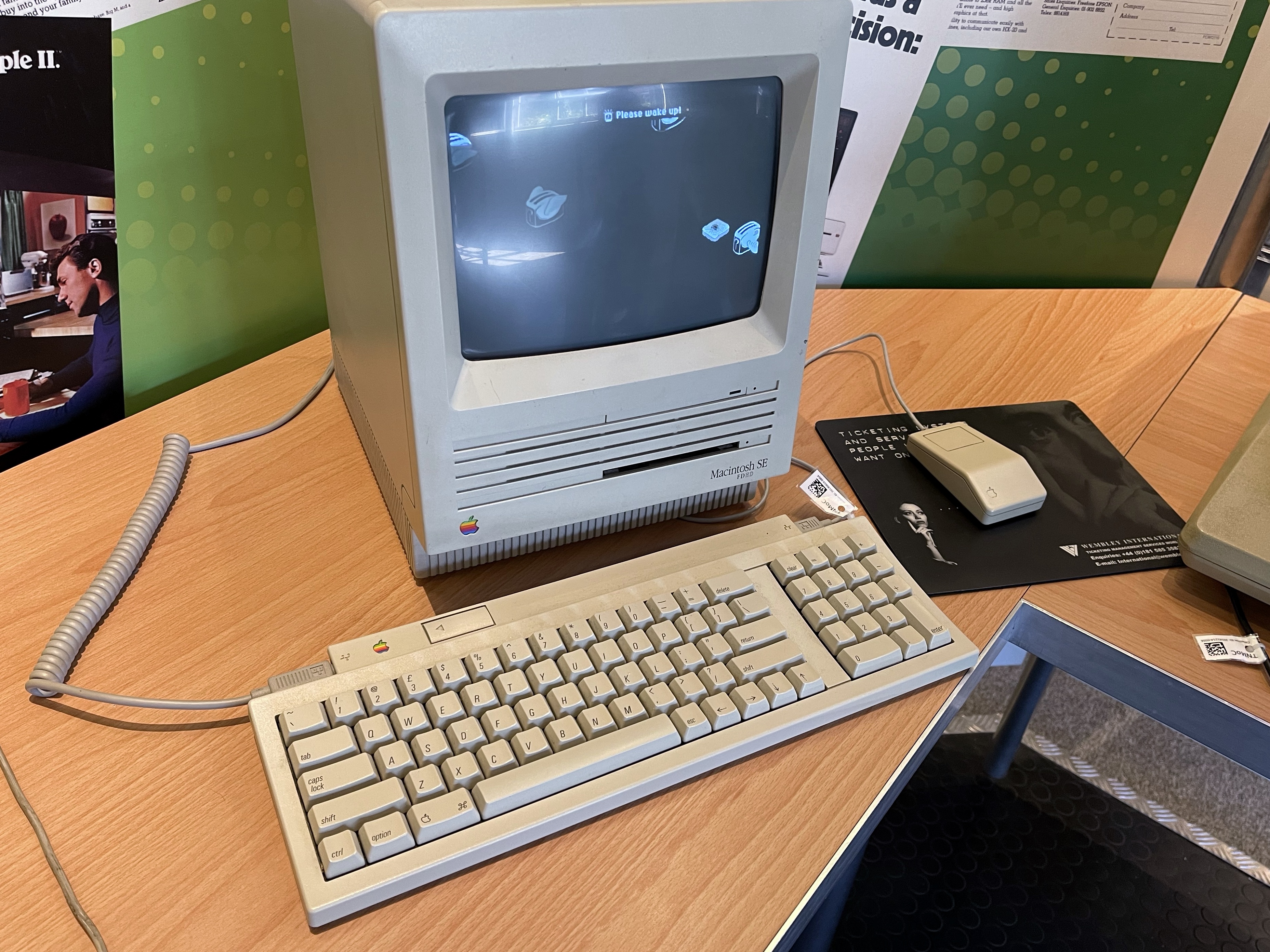 A Macintosh SE demonstrating the famous After Dark screensaver with its iconic flying toasters.
A Macintosh SE demonstrating the famous After Dark screensaver with its iconic flying toasters.
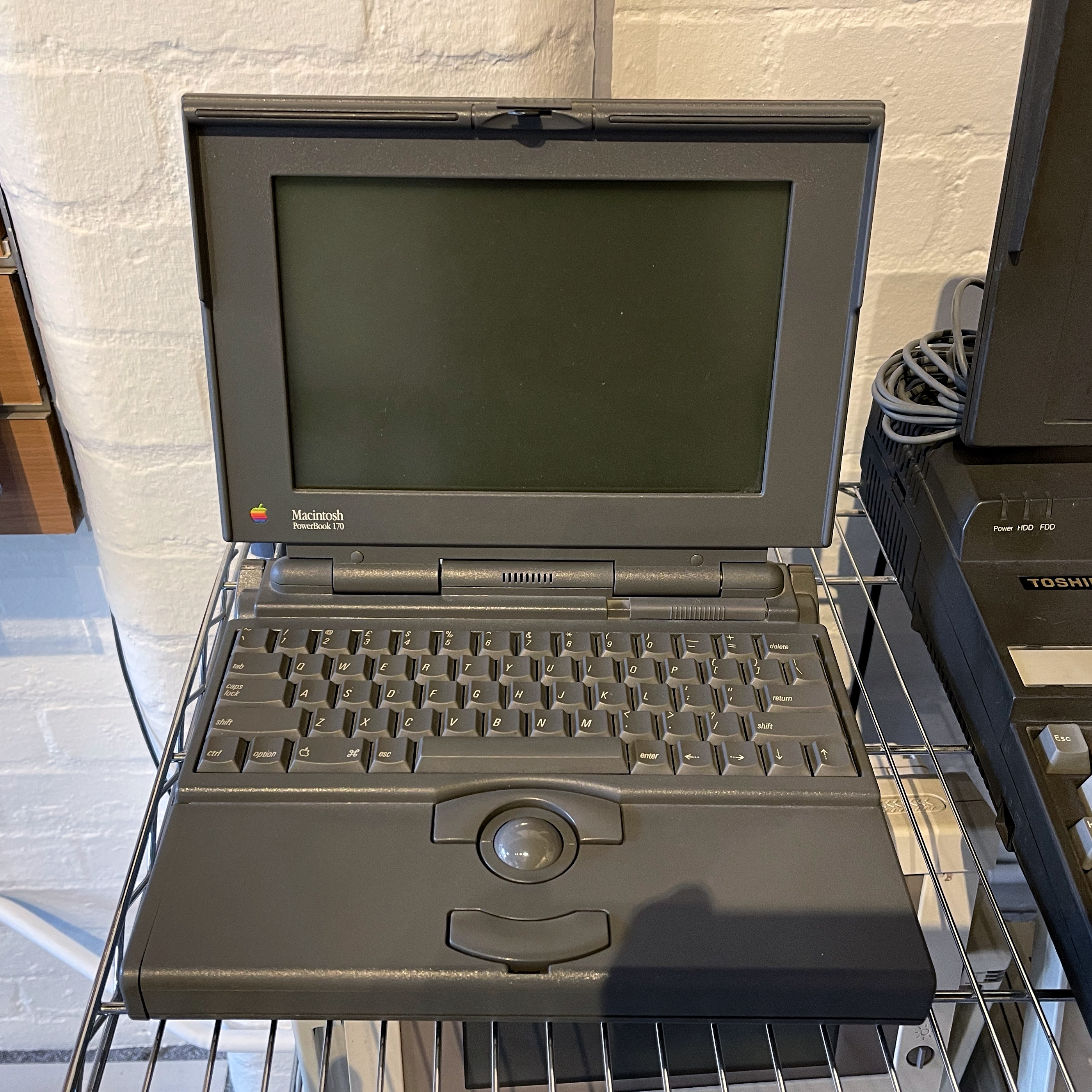 A Macintosh Powerbook 170, an early attempt by Apple at a portable laptop. My school had a lot of these, and to be honest I don’t remember them being very good when compared to a desktop.
A Macintosh Powerbook 170, an early attempt by Apple at a portable laptop. My school had a lot of these, and to be honest I don’t remember them being very good when compared to a desktop.
 The unique Commodore SX-64, which was a portable Commodore 64 with a built-in disk drive. It didn’t have batteries so it still needed to be plugged into the mains in order to use. The keyboard would cover the front when in transit.
The unique Commodore SX-64, which was a portable Commodore 64 with a built-in disk drive. It didn’t have batteries so it still needed to be plugged into the mains in order to use. The keyboard would cover the front when in transit.
Internally, it was identical to a Commodore 64, although I believe the firmware was slightly different. For example, the colours of the screen when powered on weren’t the traditional two shades of blue but instead looked more like the VIC-20 colours. Apparently this was to aid with legibility on the tiny screen.
Needless to say this was a curiosity in its day and not a massive success.
 An IBM PC. I don’t know much about IBMs, but did you know there used to be a station in Scotland called “IBM”?
An IBM PC. I don’t know much about IBMs, but did you know there used to be a station in Scotland called “IBM”?
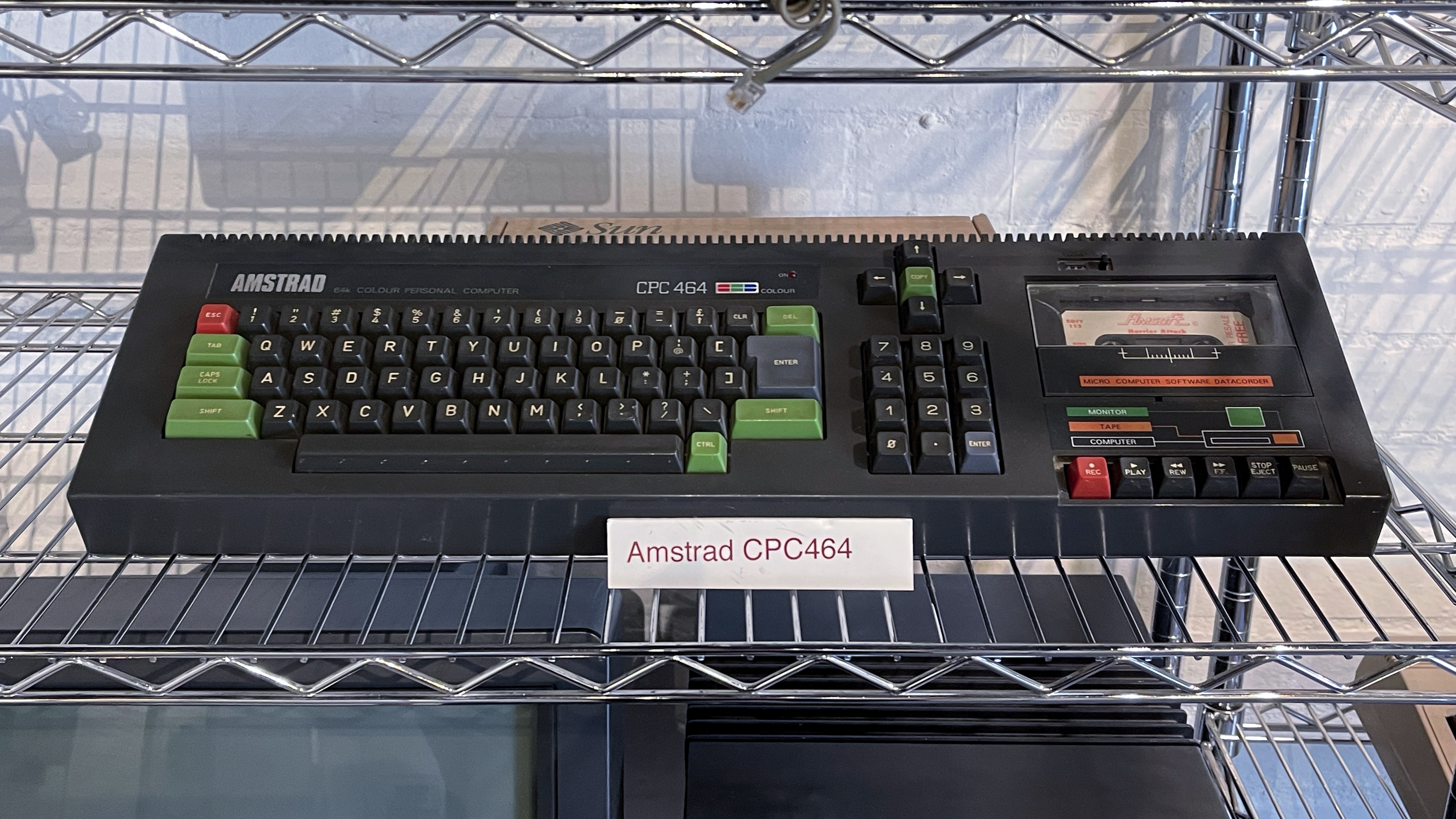 An Amstrad CPC 464, Alan Sugar’s contribution to the UK’s 80’s microcomputer market. Similar to the Spectrum +2 it came with a built-in tape deck, although with only half of the memory of the Spectrum. It was still a fine machine but you had to purchase a monitor with it as it wouldn’t work with a TV set, so they ended up being more expensive than the Speccy.
An Amstrad CPC 464, Alan Sugar’s contribution to the UK’s 80’s microcomputer market. Similar to the Spectrum +2 it came with a built-in tape deck, although with only half of the memory of the Spectrum. It was still a fine machine but you had to purchase a monitor with it as it wouldn’t work with a TV set, so they ended up being more expensive than the Speccy.
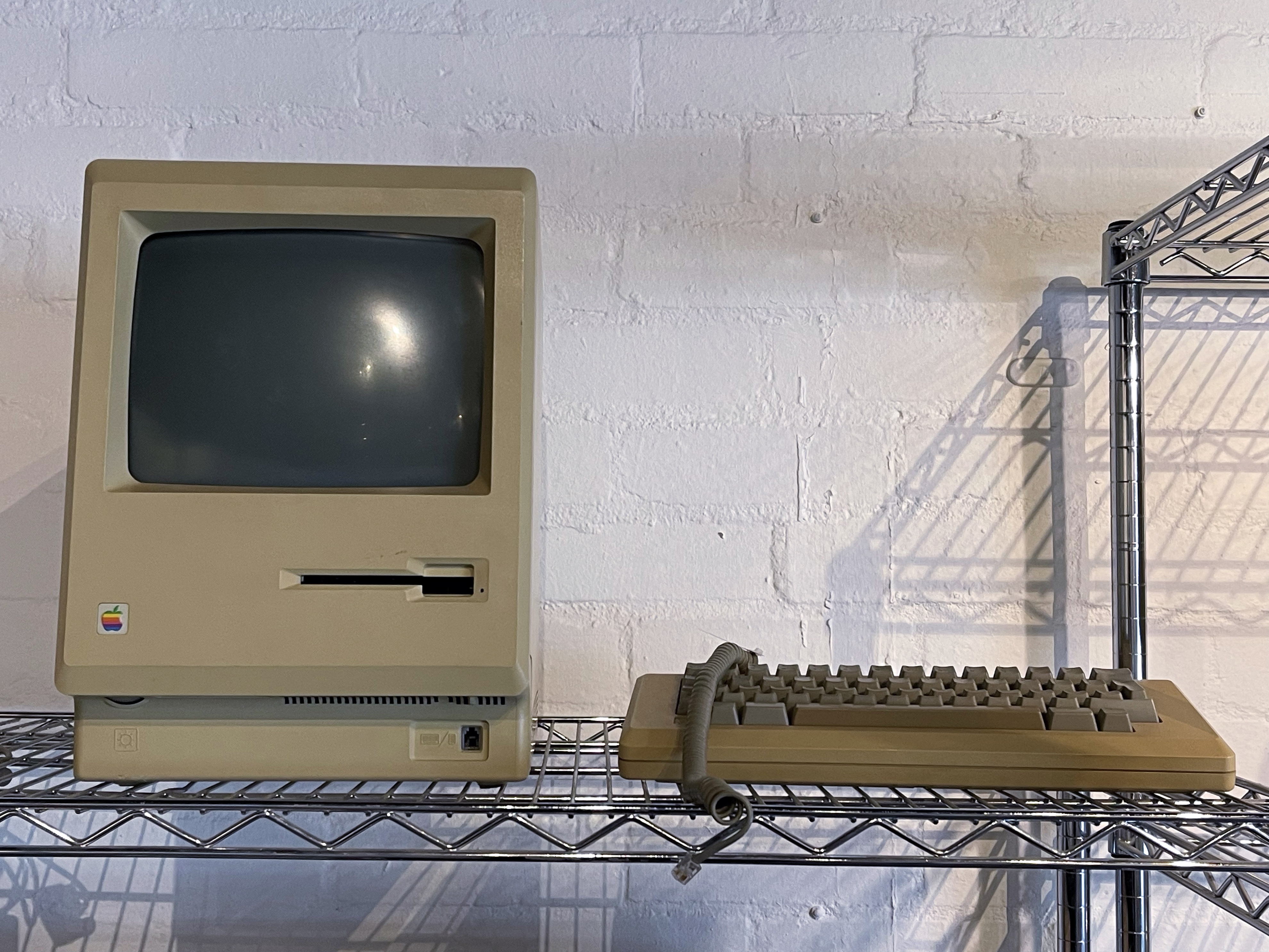 Another Apple Mac.
Another Apple Mac.
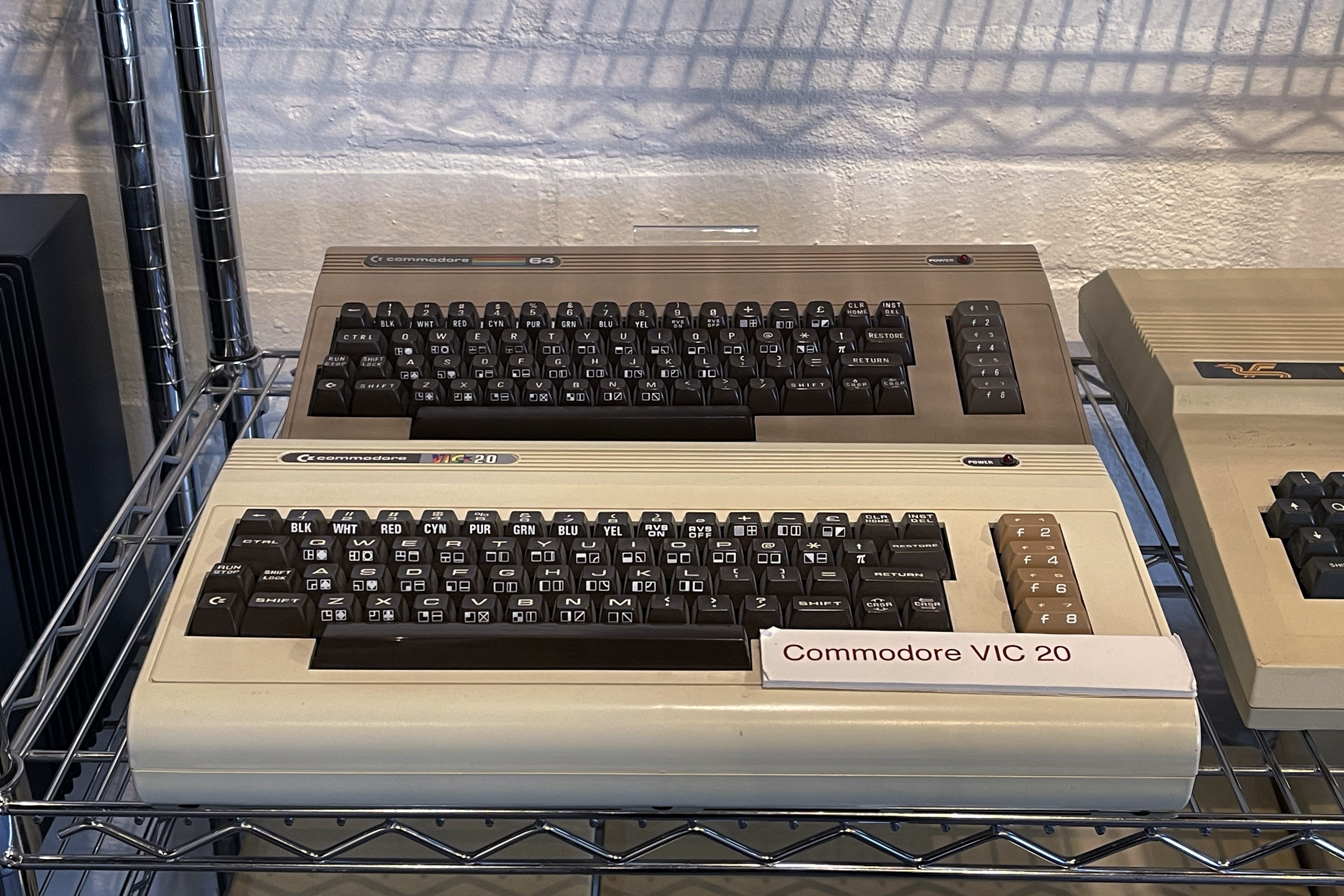 Two “bread-bins”: The Commodore VIC 20 in front and the Commodore 64 behind it.
Two “bread-bins”: The Commodore VIC 20 in front and the Commodore 64 behind it.
 BBC Model B with two unidentified peripherals.
BBC Model B with two unidentified peripherals.
 An Oric with a NeXT keyboard for some reason.
An Oric with a NeXT keyboard for some reason.
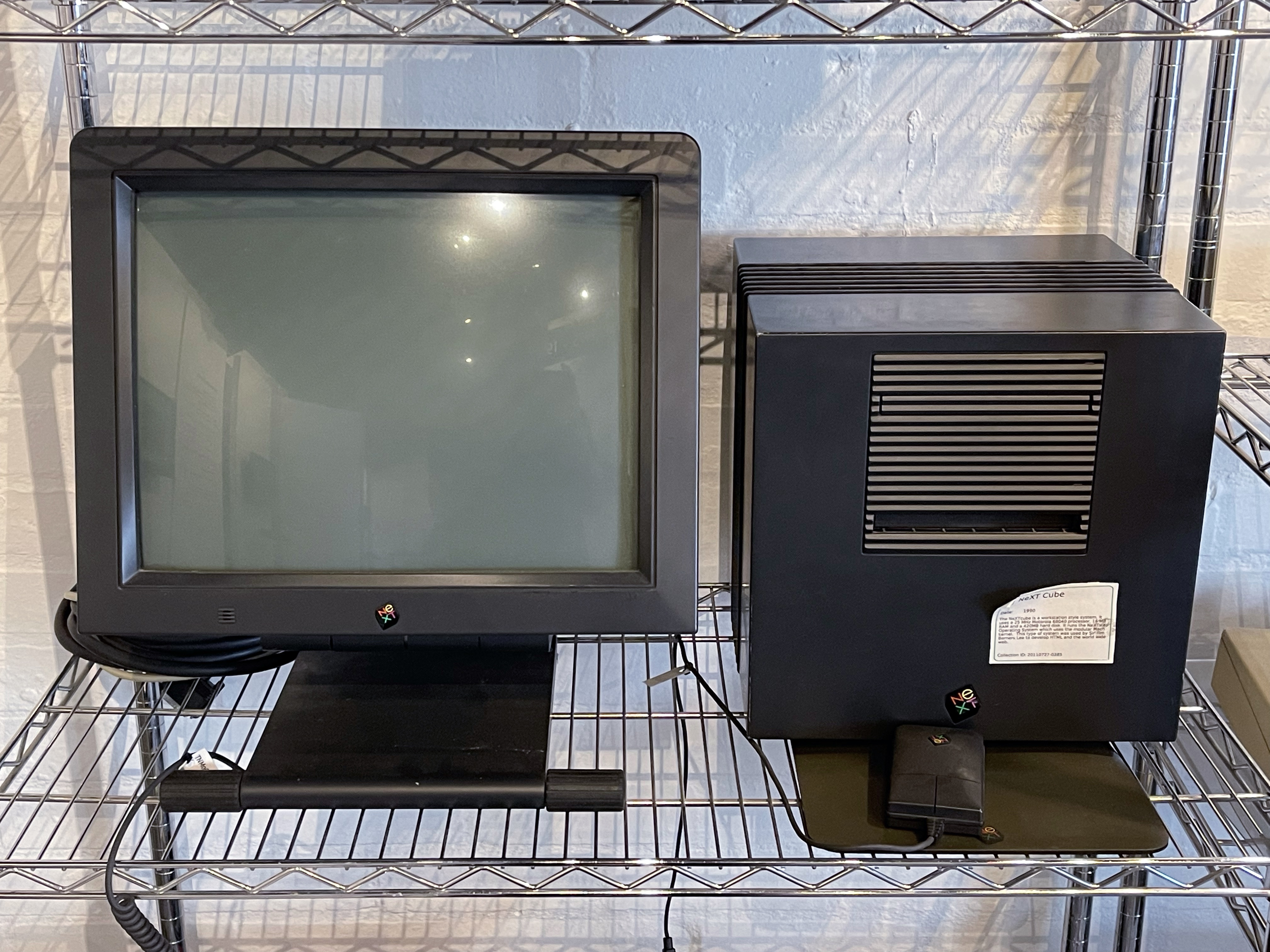 And now we’ve seen the keyboard, here’s a complete NeXT ensemble. NeXT was of course known for being the company founded by Steve Jobs between his two stints at Apple. The platform’s operating system formed the foundation of macOS X when Jobs returned back into the Apple fold.
And now we’ve seen the keyboard, here’s a complete NeXT ensemble. NeXT was of course known for being the company founded by Steve Jobs between his two stints at Apple. The platform’s operating system formed the foundation of macOS X when Jobs returned back into the Apple fold.
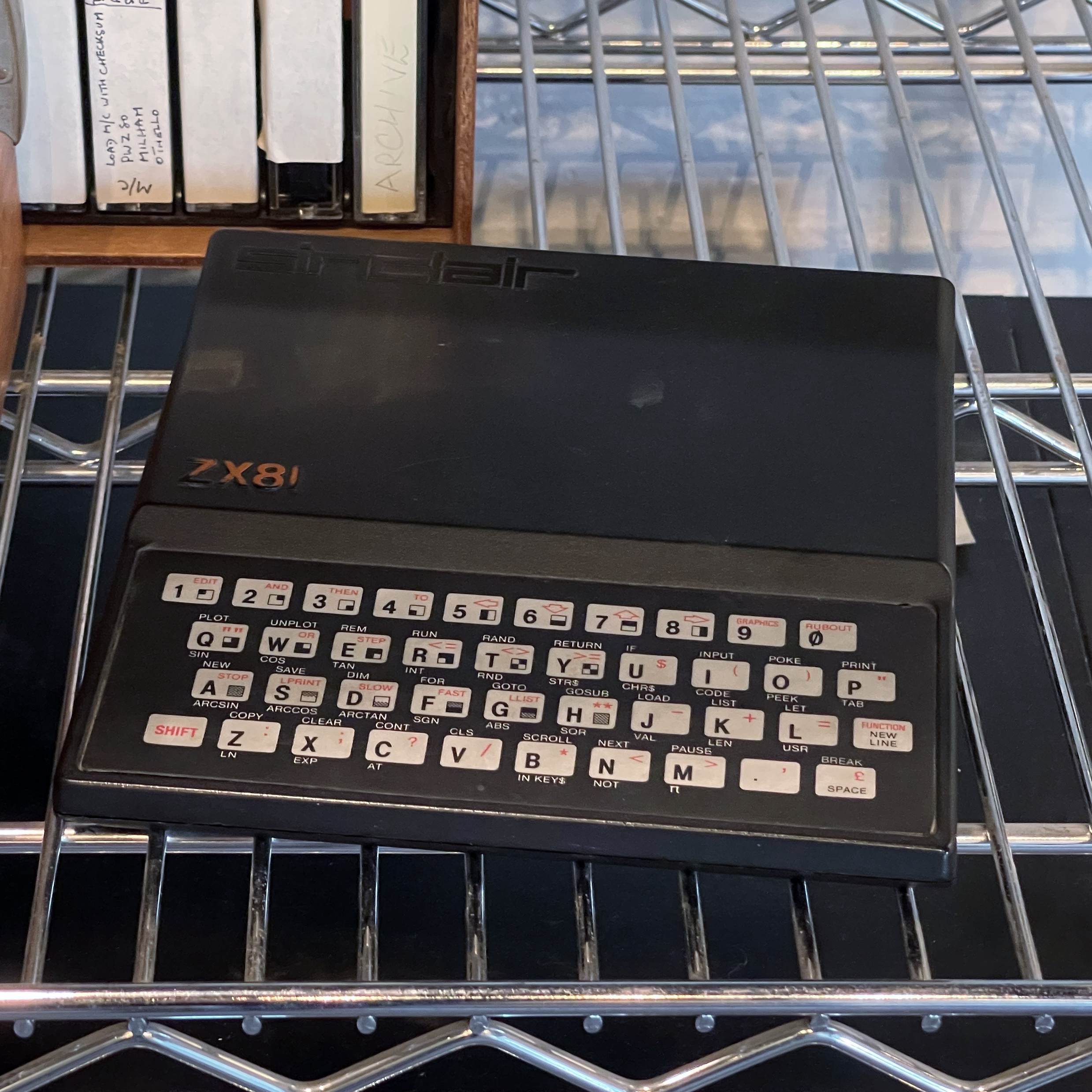 A Sinclair ZX81.
A Sinclair ZX81.
 The museum had set aside an area dedicated to the micro-computer’s role in education with a fully functional BBC Model B which people could play around with.
The museum had set aside an area dedicated to the micro-computer’s role in education with a fully functional BBC Model B which people could play around with.
There was also a Raspberry Pi, which one could argue is the modern-day successor to the BBC in education.
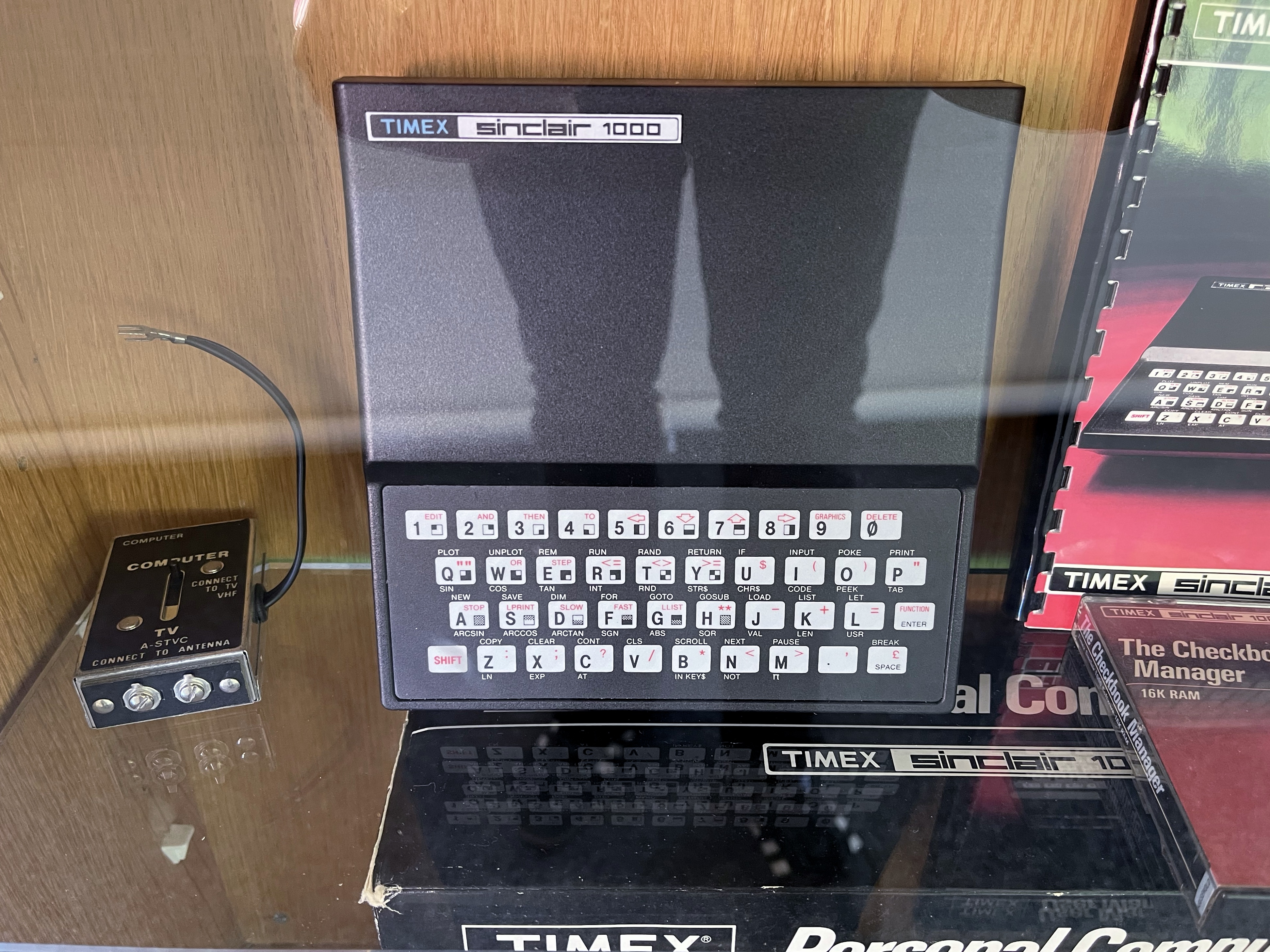 The Timex was the Sinclair ZX81 rebranded for North America, and crucially it supported NTSC rather than PAL so it would work with American television sets.
The Timex was the Sinclair ZX81 rebranded for North America, and crucially it supported NTSC rather than PAL so it would work with American television sets.
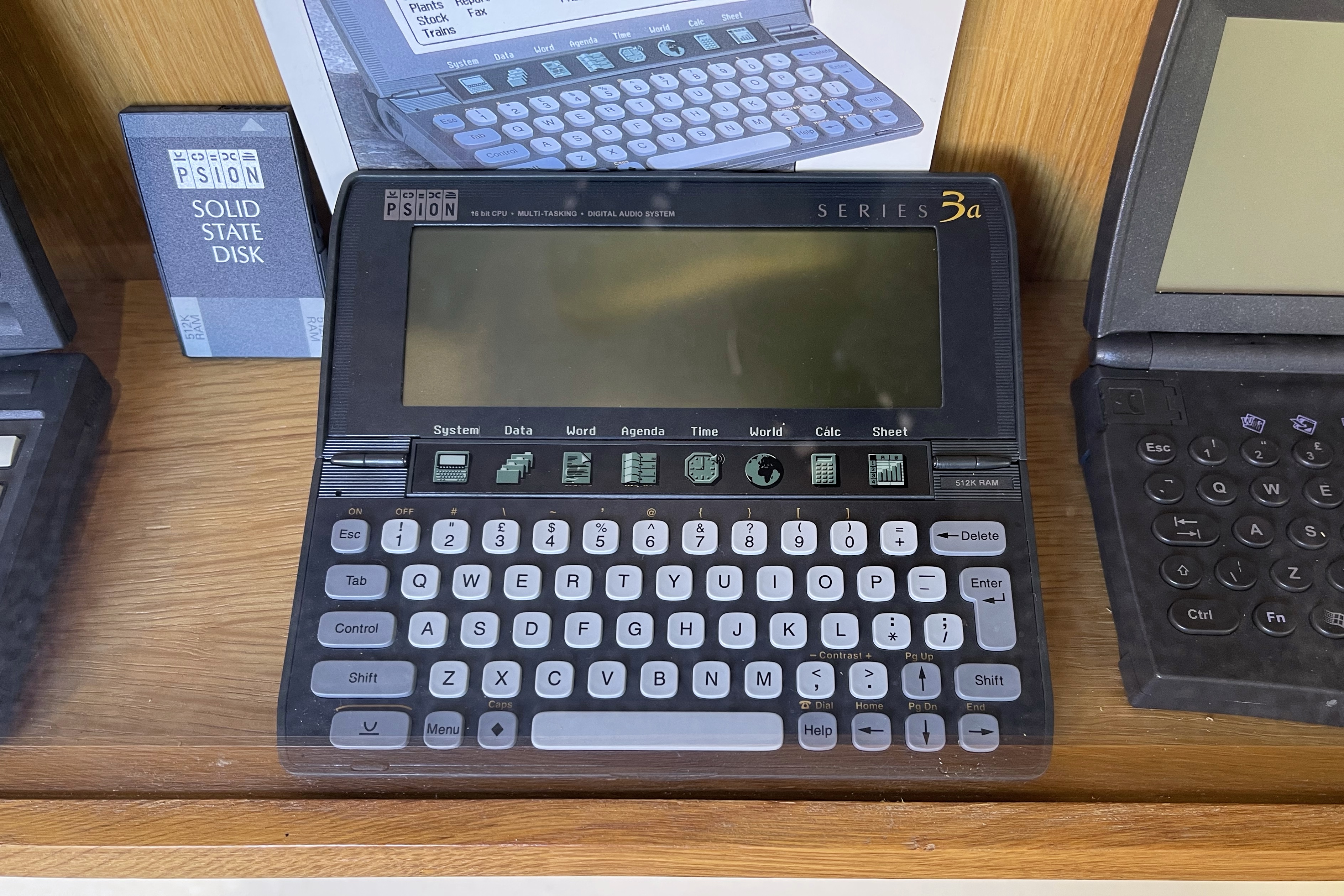 The Psion 3a. I own one of these, so I’ll save anything I have to say about it for a future post. Suffice to say, this little palmtop was a powerhouse ahead of its time. Beautiful to look at and the operating system was one of the most well designed and frictionless of the era.
The Psion 3a. I own one of these, so I’ll save anything I have to say about it for a future post. Suffice to say, this little palmtop was a powerhouse ahead of its time. Beautiful to look at and the operating system was one of the most well designed and frictionless of the era.
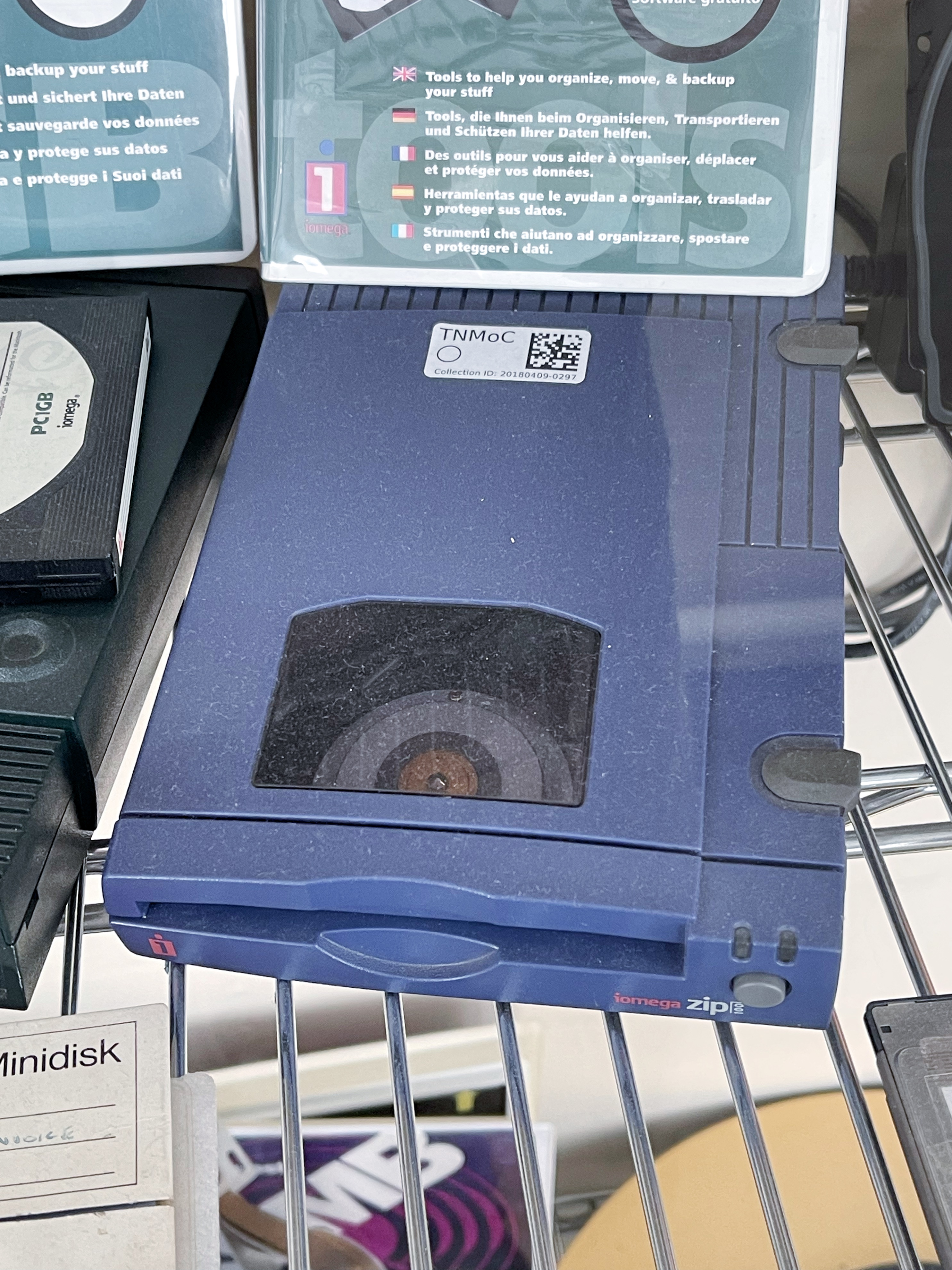 When the 1.4Mb of a floppy disk wasn’t enough, people turned to ZIP drives, which could store up to a massive 750Mb on disks not that much larger than floppies.
When the 1.4Mb of a floppy disk wasn’t enough, people turned to ZIP drives, which could store up to a massive 750Mb on disks not that much larger than floppies.
 The Silicon Graphics (SGI) Octane.
The Silicon Graphics (SGI) Octane.
 Gaming corner. From left to right: A Super Nintendo, an Atari 2600 (known as the Atari VCS in North America), a Sega Megadrive (known as the Sega Genesis in North America) and finally a PC of some variety playing Doom!
Gaming corner. From left to right: A Super Nintendo, an Atari 2600 (known as the Atari VCS in North America), a Sega Megadrive (known as the Sega Genesis in North America) and finally a PC of some variety playing Doom!
 Some more classic systems for people to play with, including the Apple II and an Acorn Archimedes.
Some more classic systems for people to play with, including the Apple II and an Acorn Archimedes.
 From left to right: A Sinclair Spectrum +3, The C64 (sadly not a real Commodore 64) and an Atari ST.
From left to right: A Sinclair Spectrum +3, The C64 (sadly not a real Commodore 64) and an Atari ST.
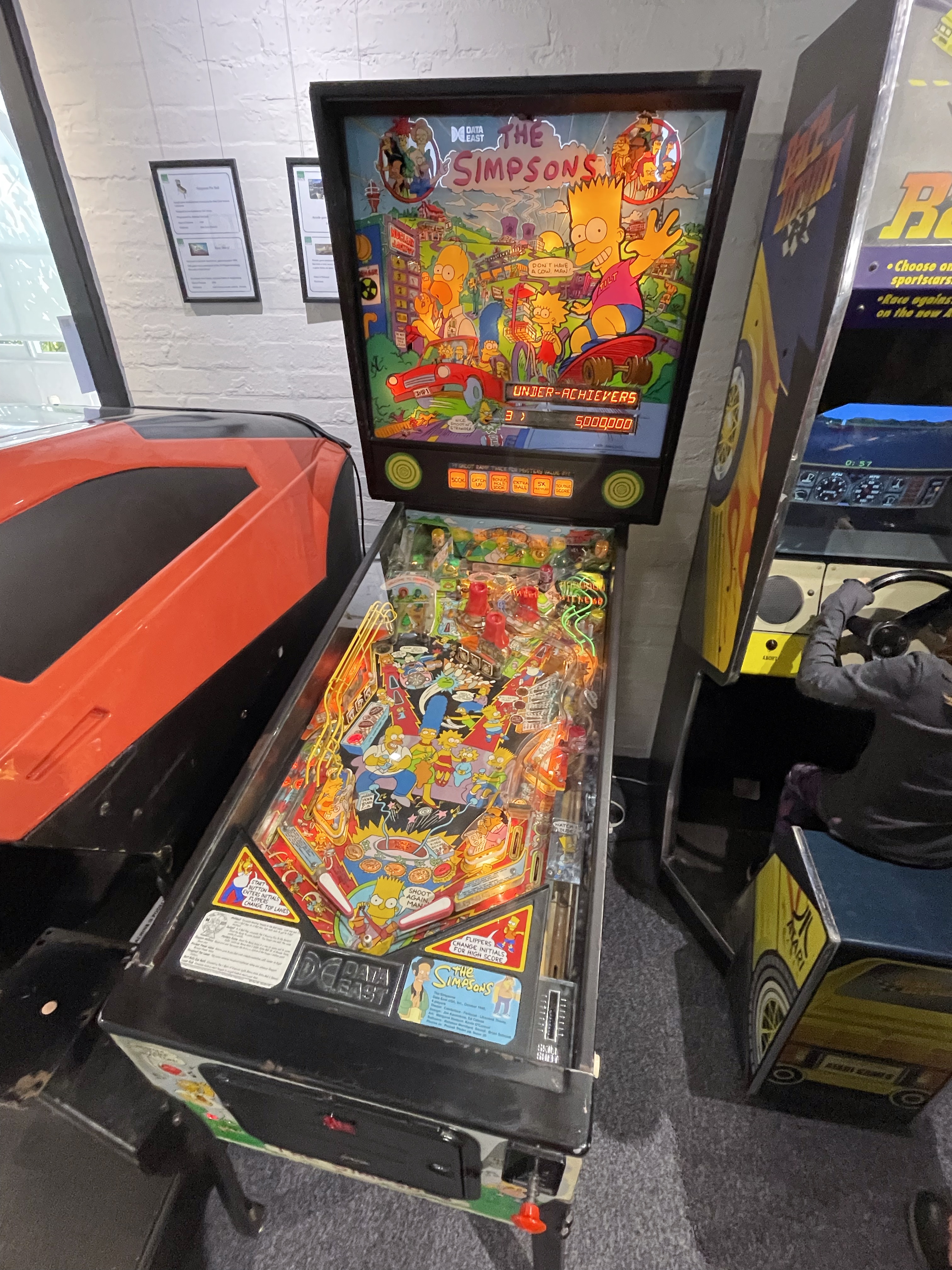 Finally, there was a small arcade corner including this The Simpsons pinball machine.
Finally, there was a small arcade corner including this The Simpsons pinball machine.
Getting There
Bletchley Park is (unsurprisingly) located just next to Bletchley. It’s a 5 minute walk from the town’s main railway station with frequent services to London (50 minutes away), Milton Keynes and the West Midlands. It also lies at the end of the Marston Vale line to Bedford for connections to the East midlands and Luton Airport.
If you’re coming from further afield and looking for overnight accommodation, there are hotels in nearby Milton Keynes which is a 10 minute train ride away.
I’d also suggest there’s far too much to see in one day between the main Bletchley Park campus and the National Museum of Computing, so it could be worth planning on dividing your trip over two visits, or booking accommodation overnight.
If you want to see another photo essay with lots of retro computers, check out The Computers of London.